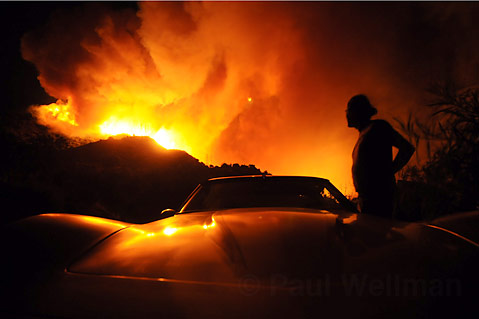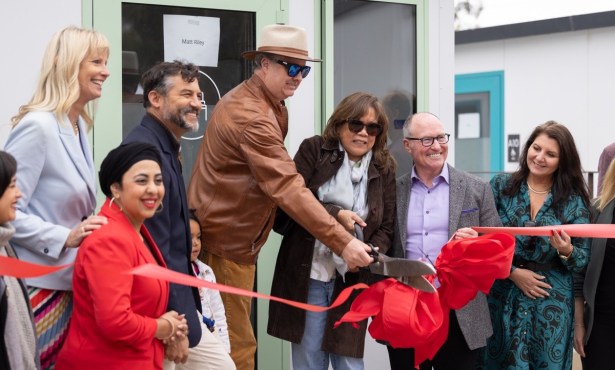Reworking the Red Flag
Fire Agencies Working with National Weather Service to Change Fire Danger Alert System

The news leaked out rather nonchalantly but to much surprise during Monday’s hearing about plans to expand the Santa Barbara Botanic Garden: The Santa Barbara County Fire Department will be changing the way it issues red flag alerts, those warnings that go out to the greater community when the mix of strong winds, low humidity, high temperatures, and other factors collide to result in dangerous wildfire conditions. Once issued, these alerts lead to restrictions on certain activities, help the region’s various firefighting agencies strategize proper staffing levels, and let the community know to be mindful of the dangers.
The announcement on Monday that there would be more red flag influence coming from the National Weather Service was delivered by County Fire’s Glenn Fidler, and was a shock for everyone in attendance, from planning commissioners Michael Cooney (“brand new and surprising,” he said) and Marell Brooks (“disconcerting,” said she) to planning staffer Alex Tuttle (“I guess their methods are more refined?” he said of the NWS) and watchdog attorney Marc Chytilo (“that is just an enormous change”).
According to Chytilo, Fidler said that there would be “substantial changes” in the way red flag alerts are issued for a specific area. For Chytilo, who is fighting against the Botanic Garden’s expansion in large part because he and his Mission Canyon neighbors fear safety will be compromised during construction and because of increases in visitors, this was important because the garden currently must close on red flag days, and Fidler seemed to be suggesting that those closures would now be governed by a new protocol. “He announced that the chief is no longer going to do that,” said Chytilo, “and if anybody wants to know if there’s a red flag, look to the National Weather Service.”

When contacted, Fidler directed the matter to County Fire Public Information Officer David Sadecki. After an unsuccessful round of phone tag, Sadecki suggested looking at the County Fire Web site, sbcfire.com, which lists red flag alert info here. That document, which was last updated in April 2008, did not appear to have undergone any recent tweaks, so Sadecki was asked what changes had recently taken place. “No change,” he replied. “We receive a report each morning from the NWS. We use their report as a tool to decide red flag or not. NWS uses temperature, relative humidity, and wind to decide the red flag. The chief can call a red flag if only one condition exists and feels it’s warranted.”
When informed that Fidler’s comments had caused surprise and confusion earlier in the week, Sadecki explained, “[County Fire] is working with the National Weather Service, local fire chiefs, state officials, and Firescope [a SoCal firefighting partnership] to update the current policy regarding red flag alerts. When the new policy is worked out, it will be released to the public.” So why did Fidler announce it on Monday? “I think Glenn was only giving a heads up that a change is in the works,” emailed Sadecki.
As to what that change will be, no one seems to know, and Sadecki was not more descriptive. Although the City of Santa Barbara’s red flag point-person Ann Marx was on vacation, the numerous city people spoken to on the way to Marx’s voicemail were also wondering what the status was. Down in Oxnard at the National Weather Service, a similar doubt prevailed. “That’s a good question,” said NWS fire weather programmer Dave Gomberg. “I’ve heard the same thing, that they are considering a switch to make it a more consistent message. But I don’t know what the official word is from Santa Barbara.”
According to Gomberg, different agencies use different standards to call red flag alerts, and many tie it directly to the National Weather Service’s opinion, which is pretty much set at sustained winds of 25 mph and relative humidity of 15 percent for six hours for Sundowner conditions or, for non-Sundowners, relative humidity at 20 percent or less for 10 hours or more. Others use temperature and various localized conditions and some, such as Ventura and Los Angeles counties, “rely heavily on trend forecasting” and essentially have their own systems, said Gomberg.
Though he can’t forecast what Santa Barbara County plans to do – and no one else seems to be talking either – Gomberg was able to share his news about this weekend’s weather: warm and dry, with a slight offshore influence. “It’s actually going to be a really nice weekend,” said Gomberg.


